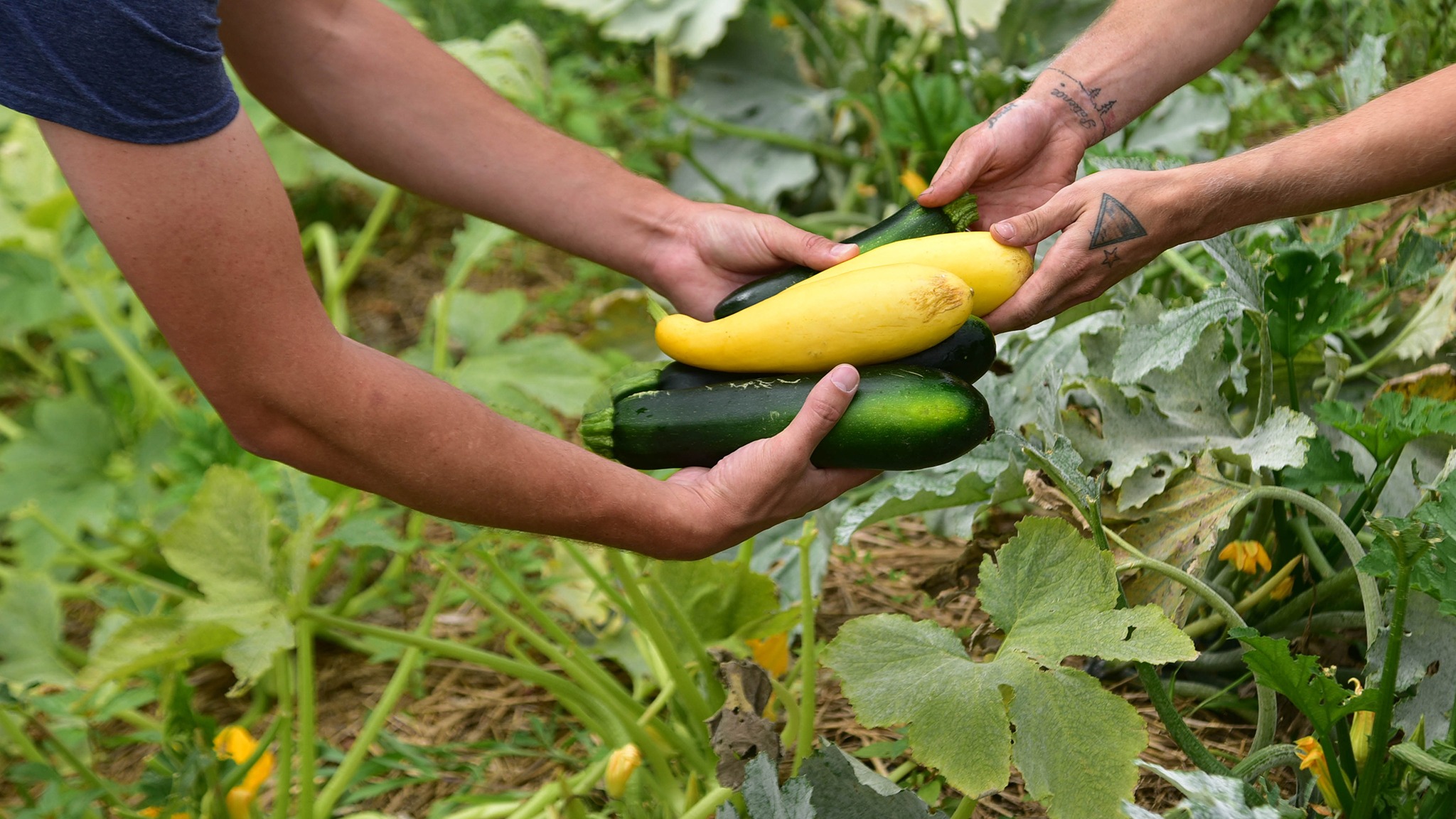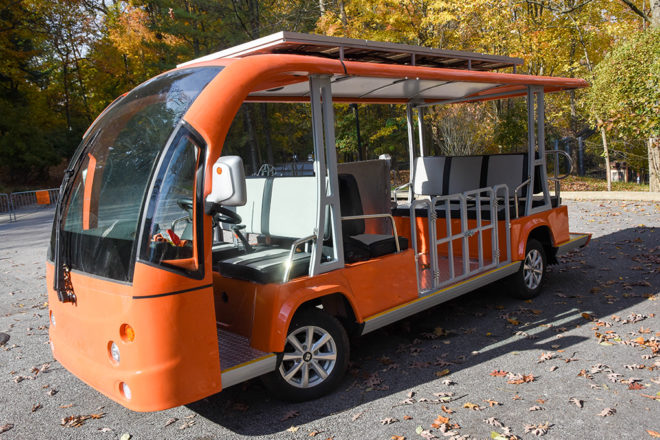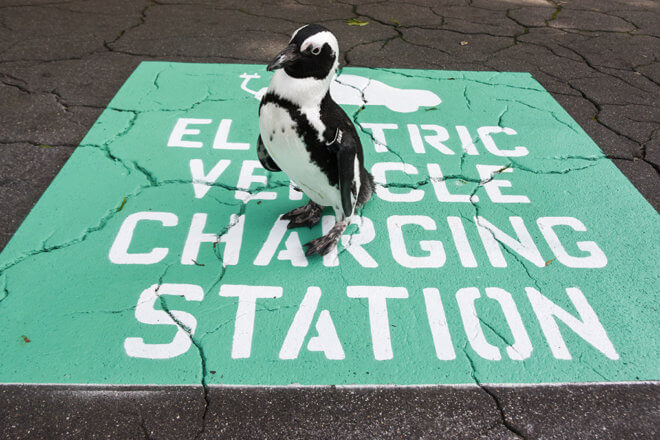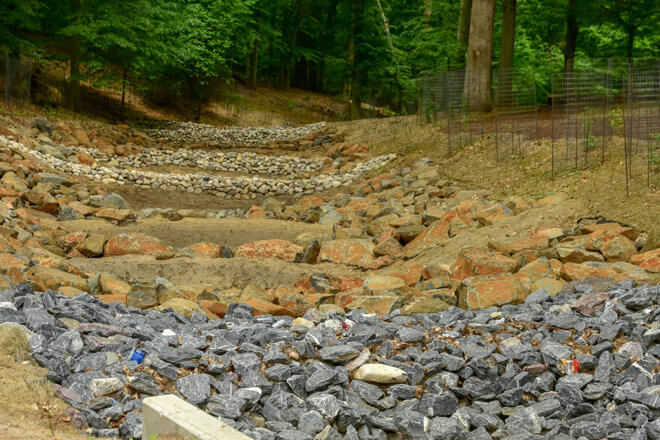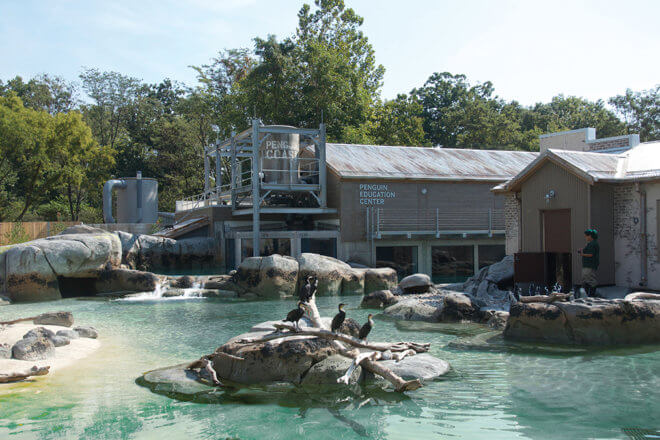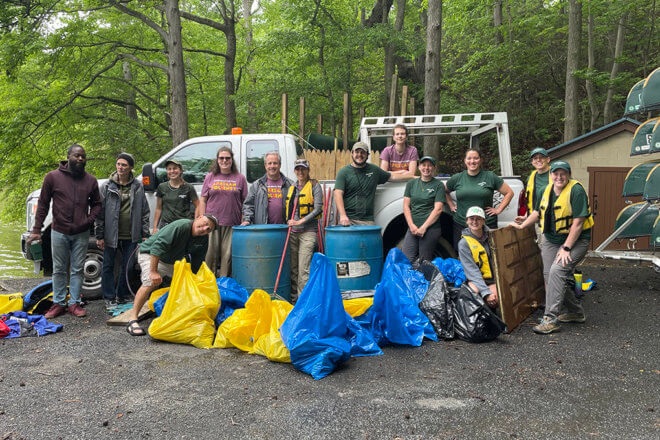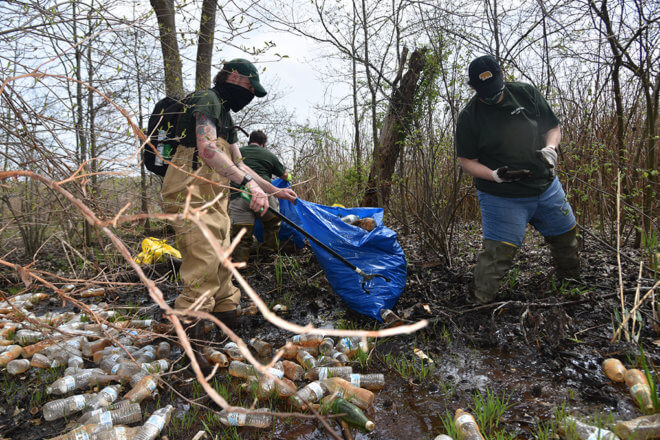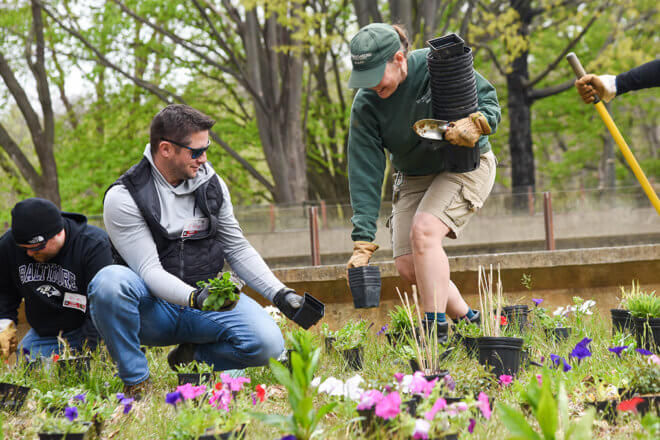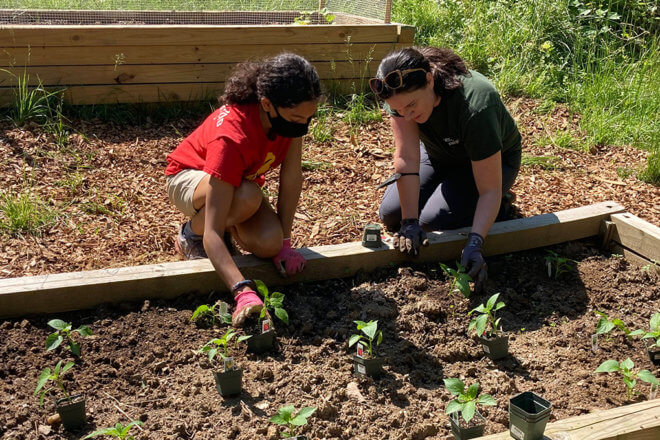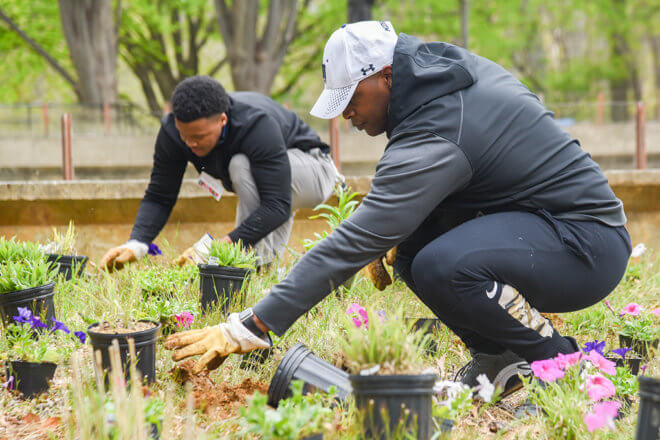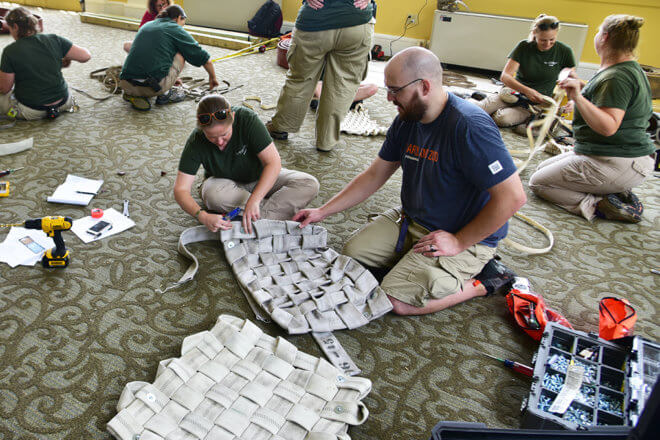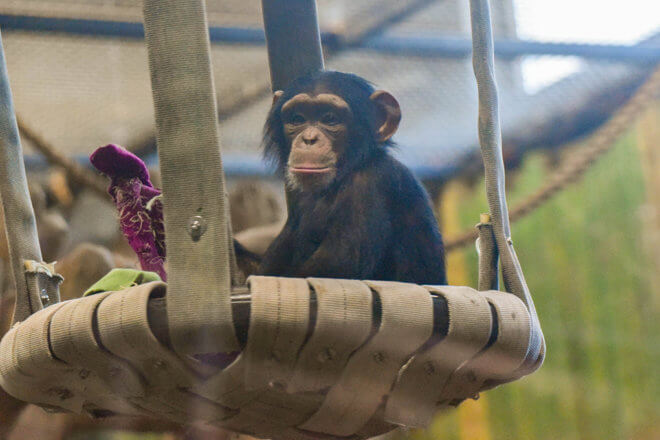Ensuring We Use Earth’s Resources Responsibly
As a conservation organization dedicated to protecting wildlife and wild places, the Maryland Zoo is committed to minimizing its harmful environmental impact. As an institution, we are working in all facets of our operations to use resources responsibly and to plan thoughtfully for future infrastructure upgrades.
Sustainability Plan
Below is our Sustainability Plan, a testament to our unwavering commitment to reducing our environmental footprint both at home and across the globe. At the heart of our mission is the well-being of animals and the health of our planet. Through bold strides and innovative initiatives, we are dedicated to fostering a more sustainable future. From eco-friendly practices within our facilities to global partnerships supporting conservation efforts, we invite you to join us on this journey towards a healthier, brighter future for generations to come.
Maryland Zoo Sustainability Plan
Click on a category below to learn more.
Climate change affects ecosystems throughout the world, including right here in Maryland. Working together, we can make changes that reduce one of the main causes of climate change: burning fossil fuels. At the Maryland Zoo, reducing the amount of fossil fuels we burn means both reducing the total amount of energy we consume and being more efficient with what we use.
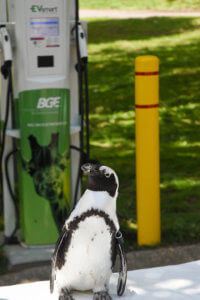
BGE Electric Vehicle (EV) Charging Stations
In June 2021, BGE partnered with the City of Baltimore and the Maryland Zoo to install three EVsmart electric vehicle charging stations, the first partnership of its kind in the City of Baltimore.
BGE Lighting Project
The Zoo partnered with the City of Baltimore’s Office of Sustainability and Energy and BGE starting in 2019 and finishing in 2020. During this city-wide project, the Zoo switched all existing lighting in buildings to energy-efficient LED bulbs.
Electric Shuttles
In the fall of 2021, the Maryland Zoo began using new electric shuttles to transport visitors from the Main Gate to the heart of the Zoo, phasing out the old diesel shuttles. This substantial change will greatly reduce our carbon footprint, and it expands our electric vehicle fleet, which also includes many electric golf carts used by staff to move around the campus.
Insulated Buildings and Energy Certified Appliances
- In 2018 the Zoo insulated two of our major buildings using building envelope work for energy efficiency.
- Energy-efficient building and energy takes precedence when making upgrades or building infrastructure at the Zoo in line with the Baltimore City Green Construction code.
- The Zoo participates in utility-saving programs whenever possible for HVAC systems and appliances that have Energy Star and other certifications.
No-Idling Zone
Idling gasoline- and diesel-powered vehicles pollutes the air. At the Zoo, exhaust from idling vehicles can affect the animals, staff, and guests in outdoor areas. The exhaust can also enter Zoo buildings through air intakes, doors, and open windows. Emissions from exhaust can lead to serious health conditions like asthma and other respiratory illnesses and can worsen existing heart and lung disease, especially in children and the elderly. In Baltimore City, 20% of children have an asthma diagnosis, which is more than double the national prevalence of 9%. And idling vehicles costs money, causes undue wear on vehicles, and costs money, especially at the current gas prices.
To protect health and decrease polluting emissions, the Zoo’s Sustainability Committee and Arctic Ambassador Center Team have invited staff to sign no-idling pledges. Pledges not to idle their vehicles were also made available to visitors visiting the Zoo on Earth Day. The Zoo is officially a no-idling zone since 2022 for staff, volunteers, contractors, and vendors.
Step Pools & Bio-retention Pond
The Maryland Zoo partnered with the Maryland Port Administration to install a series of step pools in an eroded ravine that runs along the Zoo’s Buffalo Yard Road. The step pools permit slower drainage, allowing infiltration of water into the ground, slowing erosion, and creating wildlife habitat. This partnership also resulted in the creation of a bio-retention pond at the Zoo’s main entrance with similar benefits: stormwater infiltration, erosion control, and pollution kept out of our local waterways.
Penguin Coast
This award-winning African penguin habitat at the center of the Zoo was completed in 2014 with a state-of-the-art filtration system. The original home of the Zoo’s penguins, Rock Island, required weekly draining and disinfection of the pool. With its filtration system, Penguin Coast requires draining and cleaning only a few times each year, saving water and reducing the need for chemicals.
Single-use Plastics
In 2021, the Maryland Zoo officially phased out all single-use plastic in the Zoo, including at our concessions and in our gift shop and vending machines. All water bottles available for purchase are now in aluminum only–a material that is much more easily recycled than plastic. Our food concessions partner has switched to reusable plates, trays, and utensils. Plastic shopping bags were phased out of the gift shop several years ago.
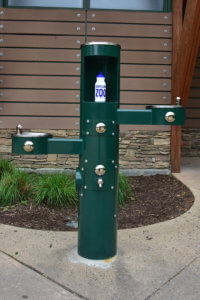
Water Bottle Refilling Stations
To encourage our visitors to join in our efforts to reduce the need for single-use plastic water bottles, the Zoo has installed three water bottle refilling stations throughout the rounds: one in Zoo Central by the Whistle Stop, one near Giraffe Feeding Station, and one in the Waterfowl Lake Pavilion where many of Zoo events take place. One of these filling stations was funded by students at Hamilton Elementary-Middle School as part of their award-winning project with the Zoo for Polar Bear International’s Project Polar Bear. Two of the stations were generously donated by Whiting Turner. We encourage all visitors to bring their own reusable water bottles when they visit.
Plastic-free EcoChallenge each July
Each summer the Maryland Zoo is a sponsor and major participant in the Plastic-free EcoChallenge. The goal of this challenge is to encourage our community to consider their daily habits and how the choices we all make in the types of products we use every day can go a long way in reducing our negative environmental impact. Visit the EcoChallenge website to learn more and to join the Maryland Zoo’s team in July!
Community Cleanup
Throughout the year, Zoo volunteers and staff participate in trash clean-ups around in the City and around the state of Maryland, including Winan Meadows in Leakin Park and Otter Point Creek in Harford County.
Gardening
Many food items travel large distances from where they were produced. By growing some vegetables for the animals in the Zoo’s Sustainability Garden, we are decreasing the number of “food-miles” required for these items, and thereby reducing the amount of fossil fuels burned.
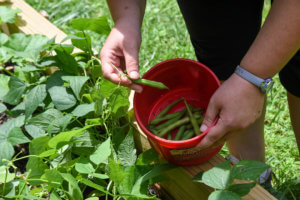
Throughout the year, Zoo Teen volunteers help Zoo staff maintain the garden, growing and harvesting more than 100 pounds of squash, beans, peppers, tomatoes, and other veggies for animal diets. Zoo visitors who use the electric shuttles to move to and from the Zoo’s Main Gate or walk along Buffalo Yard Road to or from the front entrance can see the Sustainability Garden.
In Spring of 2020, the Zoo’s Teen Leadership Council and the Sustainability Committee built garden beds and purchased all native pollinator plants from the non-profit nursery Herring Run. Since then, the garden has thrived, attracting pollinators such as bees and butterflies. A bee hive was installed in the Sustainability Garden in Spring of 2021 to accompany the pollinator garden. To learn more about the importance of pollinators such as bees, and for information on creating your own pollinator garden, visit the resources below:
Composting
Composting facilitates the natural process of decay for organic materials like yard waste and food scraps to turn them into an enriching fertilizer. By composting, we can also keep these organic materials out of landfills. And because commercially made chemical fertilizers require large amounts of fossil fuels to produce, using fewer chemical fertilizers can decrease our overall carbon footprint.
The Zoo currently has two compost bins and a composting program that takes vegetable scraps, leftover grains and chows from the animals, employee lunch leftovers, and even brown paper towels to be composted. The finished compost is used to nourish the soil in the Zoo’s Sustainability Garden.
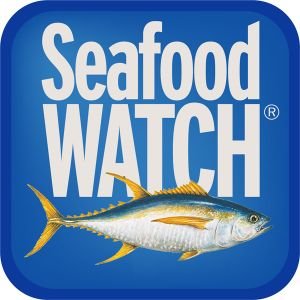
Choosing Seafood Thoughtfully
The Maryland Zoo partners with Monterey Bay Aquarium’s Seafood Watch Program to spread the word about the importance of responsible fishing practices. Seafood Watch rates seafood caught or farmed throughout the world based on scientific criteria of environmental sustainability. The Seafood Watch website is a great tool for consumers and business owners to use to identify seafood that is sustainably produced. Choosing seafood carefully as a consumer is something each one of us can do to protect the food supply for humans, for African penguins, and for marine animals in Maryland and beyond.
Although using fewer resources in the first place is the ultimate goal, reusing and recycling materials where possible are also important components of our sustainability planning.
Cell Phones
The Zoo participates in recycling of cell phones and small electronics through Eco-cell. Electronic devices contain many minerals that are mined in ecologically sensitive areas like the Congo Basin. This mining destroys the forest habitat that is home to rare and endangered species such as chimpanzees and okapis. Reclaiming and reusing minerals from old devices decreases the amount of new materials that need to be mined for the production of new devices. To encourage our visitors to properly recycle their devices for the benefit of chimp and okapi habitats, the Zoo offers two drop-off boxes for cell phone recycling.
Wooden Pallets
The Zoo receives many pallets of straw and hay to feed and provide bedding for the animals. Since 2015, the Zoo’s Commissary Department has participated in a wooden pallet buy-back program with our hay supplier.
Paper and Cardboard Recycling
Paper is one of the most recyclable materials, and cardboard is currently in high demand to make new boxes to transport things we use every day. The Zoo participates in the Paper Retriever program and Baltimore City Recycling, recycling paper used throughout the Zoo.
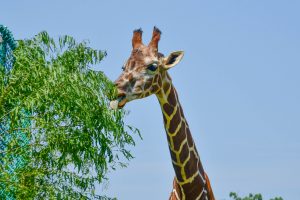
BGE Browse Program
Many of the Zoo’s herbivores receive browse–the shoots, leaves, and twigs from trees and shrubs–as part of their daily diet and enrichment. Some species require specialized browse from particular plants that must be brought in from a distance. But other species can enjoy browse from a greater range of plants, including trees here in the Baltimore area. Since 2016, the Zoo has partnered with BGE’s Tree Trimming Program, the City of Baltimore, and Lewis Tree to receive branches and browse trimmed away from power lines. The types of browse and their sources are carefully screened by our veterinary staff for safety. Once the browse arrives at the Zoo, our nutrition staff clean, sort, and package it, and then deliver it to animals throughout the Zoo–from elephants, to colobus monkeys, even to goats in the Farmyard.
Enrichment
The Zoo’s keepers and volunteers give new life to a wealth of once-used items to create enrichment for the Zoo’s residents. These items can range from cardboard boxes to car wash flaps. The Zoo has partnered with Hose to Habitat on projects, and staff have participated in many Hose to Habitat workshops. This not-for-profit organization reuses material such as old fire hoses and turns them into fun and safe enrichment for many of our animals. Visit Hose-to-Habitat to learn more.
WOULD YOU LIKE TO SUPPORT OUR EFFORTS?
The Maryland Zoo in Baltimore is a 501(c)3 non-profit organization that relies in large part on the generous contributions from people like you who care about our critical wildlife conservation efforts. These efforts would not be possible without your support. To make a tax-deductible, secure online donation to the Zoo, please click the button below.
